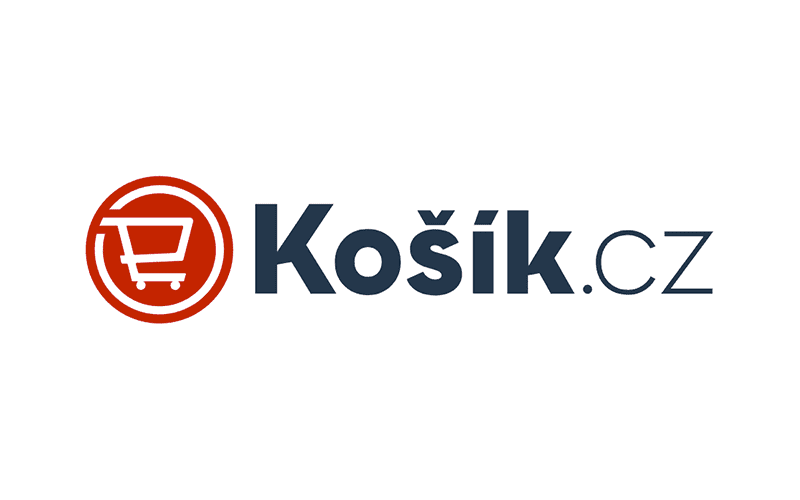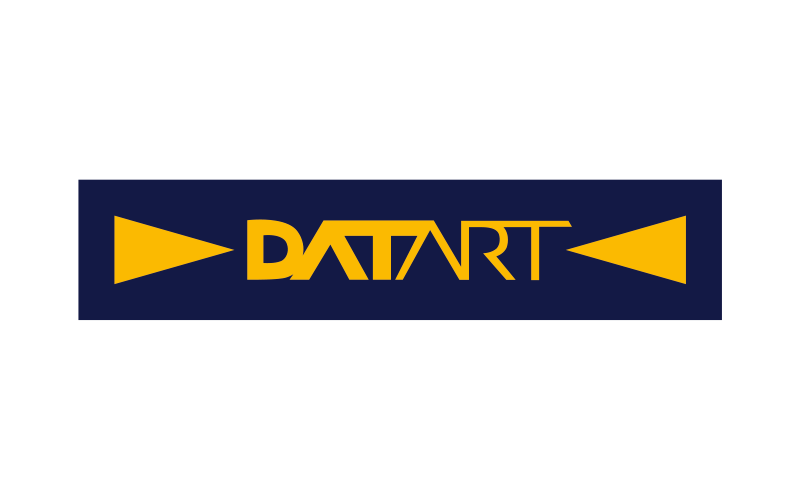Data transformation and preparation
Processing and refining raw data to serve efficiently your insights-powered marketing
How Does Transformation, Preparation, and Storage Impact Analytics?
Data transformation, preparation, and storage are vital for data analytics. Transformation converts raw data into usable formats, preparation readies it for analysis, and storage ensures accessibility and security.
Together, these processes enable organizations to extract valuable insights, identify patterns, and make informed decisions based on their data.
Why to
transform collected data
1
Data transformation
Clean your data, repair inconsistencies and convert them to a usable format for further work.
2
Data storage
Access correct data anytime, anywhere. Use advanced data warehousing methods.
3
Data preparation
Data finetuning and modeling for the use of marketing attribution methods to be able to power your campaigns at the very edge of efficiency.
Benefits* of Data Transformation and Preparation
The main benefit of data transformation, preparation, and storage is the ability to turn raw data into meaningful insights.
By effectively processing and organizing the data, organizations can derive valuable information that empowers informed decision-making, identifies actionable opportunities, and ultimately drives business growth and success.
Solution
details & steps
Data cleaning, also known as data cleansing or data scrubbing, is the process of identifying and correcting or removing errors, inconsistencies, and inaccuracies in a dataset. It involves detecting and rectifying issues that can arise from various sources, such as data entry errors, missing values, outliers, duplicate records, or formatting inconsistencies.
The primary goal of data cleaning is to ensure the accuracy, integrity, and quality of the data before it is used for analysis, reporting, or any other data-driven tasks. By cleaning the data, organizations can reduce the risk of making incorrect conclusions or decisions based on flawed or unreliable data.
Data cleaning typically involves several steps:
Data Validation: Validating the data to check for completeness, accuracy, and adherence to predefined rules or constraints. This may involve verifying data types, ranges, or formats.
Handling Missing Data: Addressing missing values by either imputing them with estimated values based on other data points or removing the records with missing values, depending on the context and the impact of missing data on the analysis.
Removing Duplicates: Identifying and eliminating duplicate records to avoid redundant information and ensure data accuracy.
Correcting Inconsistencies: Resolving inconsistencies in data, such as standardizing units of measurement, resolving naming discrepancies, or fixing formatting errors.
Handling Outliers: Identifying and handling outliers, which are extreme values that deviate significantly from the rest of the dataset. Outliers can be corrected, removed, or treated separately, depending on the nature of the data and the analysis goals.
Data Integration: If working with multiple data sources, data cleaning involves integrating data from different sources by matching and merging records based on common identifiers or key fields.
By performing thorough data cleaning, organizations can improve the quality and reliability of their datasets. Clean data enables more accurate analysis, better decision-making, and reduces the potential for bias or errors in the results. It also ensures that data-driven initiatives are built on a solid foundation of trustworthy and reliable information.
Challenges
Missing Data:
Dealing with missing data is a common challenge in data cleaning. Missing data can occur due to various reasons, such as incomplete data collection, data entry errors, or intentional omissions. Handling missing data requires careful consideration as it can impact the validity and integrity of the dataset. Determining the appropriate method for handling missing data, whether through imputation or removal, depends on the nature of the missing values, the data analysis objectives, and the potential impact on the results.Inconsistent Data Formats and Values:
Data cleaning often involves addressing inconsistencies in data formats and values. Inconsistencies can arise due to differences in data entry practices, varying data sources, or data integration issues. Examples of inconsistencies include inconsistent date formats, variations in naming conventions, or different units of measurement. Standardizing these formats and values requires careful examination, data transformation, and applying business rules or domain knowledge to ensure consistency across the dataset.Dealing with Outliers and Anomalies:
Outliers and anomalies are extreme values that deviate significantly from the rest of the dataset. These can occur due to measurement errors, data entry mistakes, or genuinely unusual observations. Identifying and handling outliers is crucial in data cleaning to prevent them from unduly influencing statistical analysis or modeling results. Determining whether to correct, remove, or treat outliers separately requires a careful examination of the data distribution, domain knowledge, and the objectives of the analysis.Scalability and Efficiency:
Data cleaning can become challenging when dealing with large datasets or real-time data streams. The process may require significant computational resources and time to perform the necessary transformations and validations. Ensuring scalability and efficiency in data cleaning processes involves optimizing algorithms, leveraging parallel processing or distributed computing frameworks, and utilizing appropriate tools or technologies.
Benefits
Improved Data Accuracy and Quality:
Data cleaning helps improve the accuracy and quality of the dataset. By identifying and rectifying errors, inconsistencies, and inaccuracies in the data, organizations can ensure that the data is reliable and trustworthy. Clean data provides a solid foundation for analysis, reporting, and decision-making, as it minimizes the risk of drawing incorrect conclusions or making flawed decisions based on flawed data.Enhanced Data Insights and Analysis:
Clean data leads to more accurate and meaningful data insights and analysis. By removing noise, outliers, and inconsistencies, data cleaning helps reveal patterns, trends, and relationships that might have been obscured by erroneous or inconsistent data. Clean data enables organizations to derive more accurate statistical measures, build reliable predictive models, and gain deeper insights into customer behavior, market trends, and business performance.Increased Efficiency and Cost Savings:
Data cleaning can result in increased operational efficiency and cost savings. By ensuring data accuracy and quality, organizations can avoid the costs associated with incorrect decisions, flawed strategies, or rework caused by erroneous data. Clean data reduces the need for manual data correction or troubleshooting, streamlines data processing and analysis, and improves overall productivity. With accurate and reliable data, organizations can make informed decisions more efficiently, leading to improved business outcomes and cost savings.Enhanced Data Integration and Sharing:
Data cleaning plays a vital role in data integration and sharing efforts. When combining data from multiple sources or sharing data with external parties, ensuring data quality and consistency is crucial. Clean data minimizes the challenges and complexities associated with data integration, facilitates smooth data sharing, and improves data interoperability. It enables organizations to leverage data from different systems or departments, support collaborative efforts, and enhance data-driven decision-making across the organization.
Data storage refers to the process of storing and organizing digital information in a structured manner to ensure its accessibility, security, and preservation. It involves selecting appropriate storage systems, devices, and technologies to store data reliably and efficiently. Data storage is a critical component of any organization's IT infrastructure as it enables the storage and retrieval of data for various purposes, such as operational processes, analytics, and data backup.
Data can be stored in different formats, including databases, file systems, cloud storage, or specialized storage solutions. The choice of storage method depends on factors such as data volume, accessibility requirements, performance needs, and security considerations. Data storage solutions typically involve the use of storage devices like hard disk drives (HDDs), solid-state drives (SSDs), network-attached storage (NAS), or storage area networks (SANs).
Effective data storage ensures data integrity, availability, and scalability. It involves implementing strategies for data backup, disaster recovery, and data lifecycle management. Organizations must consider factors such as data growth, compliance requirements, cost-effectiveness, and data access patterns when designing their data storage infrastructure.
Challenges
Data Security and Privacy:
Data security is a significant challenge in data storage. Organizations must ensure that stored data is protected from unauthorized access, breaches, or cyber threats. Implementing robust security measures, such as encryption, access controls, and data governance policies, is crucial to safeguard sensitive information. Compliance with data privacy regulations, such as the General Data Protection Regulation (GDPR) or the California Consumer Privacy Act (CCPA), adds an additional layer of complexity to data storage, requiring organizations to meet specific requirements to protect individuals' privacy.Data Storage Scalability:
Managing the scalability of data storage is another challenge. Organizations need to anticipate and accommodate the growing volume of data generated over time. The scalability challenge involves choosing storage solutions that can handle expanding data volumes without compromising performance or incurring high costs. Ensuring seamless data storage expansion and integration with existing systems requires careful planning and evaluation of storage technologies that can scale efficiently.Data Retention and Lifecycle Management:
Proper data retention and lifecycle management pose challenges in data storage. Organizations need to define policies and processes for determining how long data should be stored, when it should be archived, and when it can be safely deleted. Compliance requirements and legal considerations can further complicate data retention decisions. Effective data lifecycle management involves balancing the need for data availability, compliance requirements, and storage costs to ensure efficient data storage and retrieval.Data Storage Costs:
Cost optimization is an ongoing challenge in data storage. The increasing volume of data, the need for scalable storage solutions, and the costs associated with maintaining data storage infrastructure can strain organizational budgets. Balancing storage costs with data access requirements and performance needs is crucial to optimize storage expenditure. Organizations need to carefully evaluate storage options, consider cloud-based storage solutions, implement data compression or deduplication techniques, and monitor storage utilization to control costs effectively.
Benefits
Data Accessibility and Availability:
Proper data storage ensures that data is readily accessible when needed. It allows organizations to retrieve and use data for various purposes, such as decision making, analysis, or operational processes. With efficient storage systems and well-organized data structures, organizations can retrieve and access data quickly, enabling timely decision making and efficient business operations.Data Integrity and Reliability:
Data storage systems play a crucial role in maintaining data integrity and reliability. By storing data in secure and controlled environments, organizations can protect data from corruption, loss, or unauthorized modifications. Implementing backup and disaster recovery mechanisms as part of data storage practices helps ensure data is protected from accidental or deliberate loss, minimizing downtime and preserving data integrity.Scalability and Flexibility:
Effective data storage allows organizations to scale their storage capacity to accommodate the growing volume of data. Scalable storage solutions, such as cloud-based storage, provide flexibility in expanding storage capacity as data requirements increase. This scalability enables organizations to adapt to changing business needs, handle data growth, and accommodate new data types or sources without significant disruptions or additional infrastructure investments.Cost Efficiency:
Implementing optimized data storage practices can result in cost savings for organizations. By adopting efficient storage technologies, leveraging cloud-based storage, and implementing data deduplication or compression techniques, organizations can reduce storage costs and optimize their storage investments. Effective data lifecycle management, including proper data retention and deletion practices, ensures that storage resources are allocated efficiently, minimizing unnecessary storage costs.
Data access management refers to the process of controlling and regulating access to data within an organization. It involves implementing security measures, protocols, and technologies to ensure that data is accessed only by authorized individuals or systems. Data access management aims to protect sensitive information, maintain data privacy, and prevent unauthorized access or data breaches.
Key components of data access management include user authentication, authorization, and access controls. User authentication verifies the identity of individuals attempting to access data, typically through credentials such as usernames and passwords, biometrics, or multi-factor authentication. Authorization determines the level of access rights granted to authenticated users, specifying what data they can access and the actions they can perform. Access controls enforce these authorization policies by restricting data access based on user roles, permissions, or other predefined criteria.
Data access management helps organizations mitigate risks associated with unauthorized data access, insider threats, or data leaks. By implementing appropriate access controls, organizations can ensure that data is accessed only by authorized personnel, minimizing the potential for data breaches, data loss, or misuse. It also enables organizations to maintain compliance with data privacy regulations and industry standards.
Challenges
Complexity of Access Control Policies:
Developing and maintaining effective access control policies can be challenging due to the complexity of modern IT environments. Organizations often have multiple systems, applications, and data repositories, each with its own access requirements. Managing access control policies across these diverse systems and ensuring consistent and granular permissions can be complex and time-consuming. Balancing the need for security with the flexibility required by different user roles and responsibilities adds to the challenge.User Provisioning and Access Lifecycle Management:
Managing user access throughout their lifecycle within an organization can be challenging. The process of provisioning new user accounts, granting appropriate access privileges, and managing changes or revocations when users leave the organization or change roles requires coordination and automation. Keeping track of user access rights, ensuring timely updates, and maintaining an accurate inventory of user permissions can be a significant challenge, particularly in large or rapidly growing organizations.Insider Threats and Data Leakage:
Insider threats pose a significant challenge to data access management. Authorized users with legitimate access to data can misuse their privileges, intentionally or unintentionally, leading to data breaches or leaks. Detecting and mitigating insider threats requires implementing robust monitoring mechanisms, user behavior analytics, and alerting systems. Striking the right balance between providing necessary access for employees to perform their tasks and preventing unauthorized or malicious activities is a constant challenge for organizations.Compliance with Data Privacy Regulations:
Compliance with data privacy regulations, such as the General Data Protection Regulation (GDPR) or the California Consumer Privacy Act (CCPA), adds complexity to data access management. Organizations must ensure that access controls and policies align with regulatory requirements, including the principles of data minimization, purpose limitation, and user consent. Demonstrating compliance, managing user data access requests, and implementing privacy-enhancing technologies can be challenging in diverse and complex IT environments.
Benefits
Data Security and Confidentiality:
Data access management helps organizations maintain data security and confidentiality. By implementing robust access controls and authentication mechanisms, organizations can ensure that sensitive data is only accessible to authorized individuals or systems. This mitigates the risk of unauthorized access, data breaches, or data leakage, safeguarding valuable information and protecting the organization's reputation.Compliance with Data Privacy Regulations:
Effective data access management supports organizations in meeting data privacy regulations and compliance requirements. Regulations such as the General Data Protection Regulation (GDPR) or the California Consumer Privacy Act (CCPA) emphasize the need for appropriate data access controls and privacy safeguards. By implementing access management practices that align with these regulations, organizations can demonstrate compliance, protect user privacy rights, and avoid legal and financial consequences associated with non-compliance.Enhanced Data Governance and Accountability:
Data access management promotes better data governance and accountability within organizations. By implementing access controls, organizations can track and monitor data access activities, maintaining an audit trail of who accessed what data and when. This accountability enables organizations to identify potential security breaches, detect unauthorized access attempts, and investigate any suspicious activities. It also supports data governance initiatives by ensuring data is accessed and used in accordance with organizational policies and guidelines.Improved Operational Efficiency:
Implementing streamlined data access management practices enhances operational efficiency. By providing authorized users with appropriate access privileges, organizations enable employees to access the data they need to perform their tasks efficiently. Simultaneously, access controls prevent unnecessary or unauthorized access, reducing the risk of data misuse or accidental alterations. This improves productivity, streamlines workflows, and ensures that data is accessed and utilized in a controlled and efficient manner.
Data Lake building refers to the process of designing and constructing a centralized repository or storage system that allows organizations to store and manage large volumes of structured and unstructured data in its raw and unprocessed form. Unlike traditional data storage methods, such as data warehouses, a data lake retains data in its original format, preserving its full fidelity and enabling flexible analysis and exploration.
The primary objective of building a data lake is to create a scalable and cost-effective solution for storing diverse data types, including structured, semi-structured, and unstructured data. This includes data from various sources, such as customer interactions, social media, web logs, sensor data, and more. Data lakes enable organizations to accumulate vast amounts of data without the need for upfront data modeling or transformation, providing a foundation for big data analytics and data-driven insights.
Challenges
Data Quality and Governance:
Ensuring data quality and implementing robust data governance practices is a significant challenge in data lake building. Raw data ingested into the data lake may have varying levels of quality, consistency, or accuracy. Without proper data cleansing, validation, and governance processes, poor-quality data can affect downstream analytics and decision-making. Establishing data governance frameworks, data cataloging, and metadata management processes are crucial to ensure data quality and maintain trust in the data lake.Data Integration and Compatibility:
Data lakes often receive data from various sources, such as databases, applications, external systems, or streaming platforms. Integrating diverse data sources and formats can be challenging due to differences in data structures, data semantics, or data ingestion mechanisms. Ensuring compatibility and smooth integration of data from different sources require data mapping, transformation, and data pipeline management processes. Organizations need to address data integration challenges to achieve a unified view of the data and enable effective analysis.Security and Data Access Controls:
Data security is a critical challenge in data lake building. The centralized nature of a data lake necessitates robust security measures to protect sensitive and confidential data. Implementing access controls, encryption, authentication mechanisms, and monitoring systems are essential to prevent unauthorized access or data breaches. Striking the right balance between data accessibility for authorized users and maintaining data security is crucial. Organizations must establish strict security policies, data access controls, and privacy frameworks to safeguard data within the data lake.Data Lake Architecture and Scalability:
Designing and implementing a scalable data lake architecture can be challenging. As data volumes grow, organizations need to ensure that the data lake infrastructure can handle the increasing storage and processing demands. Choosing the appropriate storage technologies, distributed file systems, or cloud-based solutions that can scale effectively is crucial. Architecting the data lake infrastructure to accommodate future growth, performance requirements, and evolving data needs is a challenge that organizations need to address during the building phase.
Benefits
Scalability and Flexibility:
Data lakes provide scalability and flexibility in storing and managing large volumes of data. Organizations can easily scale their data lake infrastructure to accommodate growing data volumes and diverse data types. Data lakes can handle structured, semi-structured, and unstructured data, allowing organizations to store a wide range of data sources, such as text, images, videos, sensor data, logs, and more. The flexibility of a data lake enables organizations to adapt to changing data requirements and incorporate new data sources without the need for major infrastructure changes.Data Exploration and Advanced Analytics:
Data lakes serve as a foundation for data exploration and advanced analytics. By storing data in its raw form, data lakes enable data scientists, analysts, and data engineers to perform exploratory analysis, discover patterns, and gain insights from diverse and large datasets. With the ability to leverage various data processing frameworks, machine learning algorithms, and analytics tools, organizations can uncover valuable insights, make data-driven decisions, and extract business intelligence from the data lake.Cost Efficiency:
Building a data lake can offer cost advantages compared to traditional data storage approaches. Data lakes leverage scalable and cost-effective storage technologies, such as cloud-based object storage or distributed file systems, reducing the infrastructure and maintenance costs associated with data storage. With data lakes, organizations can eliminate the need for upfront data transformation and modeling, which can be time-consuming and expensive. The ability to store data in its raw form, without predefined schemas, provides cost savings in data ingestion, storage, and processing.Data Democratization and Collaboration:
Data lakes promote data democratization and collaboration within organizations. By centralizing data from different sources, data lakes enable a single source of truth and facilitate data sharing across teams and departments. This promotes collaboration, knowledge sharing, and cross-functional insights. Data scientists, analysts, and business users can access the data lake, explore data, and derive insights, leading to improved decision-making processes and fostering a data-driven culture within the organization.
A data warehouse is a centralized repository that stores and organizes structured and historical data from various sources within an organization. It is designed to support business intelligence (BI) and analytics activities, providing a consolidated view of data for reporting, analysis, and decision-making purposes.
Data warehouses typically employ a process known as Extract, Transform, Load (ETL) to extract data from different operational systems, transform it into a consistent format, and load it into the data warehouse. This process ensures that data from disparate sources is integrated and standardized, allowing for easy analysis and reporting
Challenges
Data Integration and Complexity:
Integrating data from disparate sources into a data warehouse can be challenging due to the complexity of data structures, formats, and systems. Organizations often have multiple data sources with different schemas, data definitions, and data quality standards. Mapping and transforming data from various systems and ensuring consistency and accuracy during the extraction, transformation, and loading (ETL) process can be time-consuming and technically demanding.Scalability and Performance:
Data warehouses need to handle large volumes of data and support complex analytical queries from multiple users concurrently. Ensuring scalability and optimal performance can be a challenge. As data volumes grow, organizations must design and optimize their data warehouse architecture, including storage, indexing, partitioning, and query optimization techniques, to maintain query performance and handle increasing data loads effectively.Data Quality and Governance:
Maintaining data quality and governance within a data warehouse is a critical challenge. Ensuring the accuracy, consistency, and reliability of data from various sources require robust data validation, cleansing, and integration processes. Data quality issues, such as inconsistent data formats, missing values, or duplicate records, can impact the accuracy of analysis and decision-making. Implementing data governance frameworks, data stewardship practices, and data quality monitoring processes are essential to address these challenges.Changing Business Requirements and Evolving Data Sources:
Business needs and data sources evolve over time, presenting ongoing challenges for data warehouses. New data sources, such as cloud-based applications or IoT devices, may emerge, requiring integration with the existing data warehouse. Adapting the data warehouse architecture, ETL processes, and schema designs to accommodate changing business requirements and evolving data sources can be complex and may require architectural adjustments, data model enhancements, and regular maintenance.
Benefits
Centralized and Integrated Data:
A data warehouse provides a centralized repository that integrates data from various sources within an organization. By consolidating data from different systems, departments, or business units, organizations can achieve a unified view of their data. This integration allows for cross-functional analysis, reporting, and decision-making, fostering a more comprehensive understanding of business operations and performance.Improved Data Analysis and Reporting:
Data warehouses enhance data analysis and reporting capabilities. The structured and optimized nature of a data warehouse enables efficient querying and analysis of large datasets. Business intelligence tools and analytical techniques can be applied to gain insights, identify trends, and make data-driven decisions. With the ability to generate reports, dashboards, and visualizations, organizations can communicate insights effectively, monitor performance, and identify areas for improvement.Historical Trend Analysis:
Data warehouses store historical data over time, enabling organizations to perform trend analysis and gain valuable insights into business performance. Historical data allows for the identification of patterns, seasonality, and long-term trends that can inform strategic decision-making. By analyzing historical data alongside current data, organizations can make informed predictions, assess the impact of past decisions, and identify opportunities for growth.Data Consistency and Data Quality:
A data warehouse focuses on data consistency and data quality. During the ETL process, data is cleansed, transformed, and standardized, ensuring accuracy and consistency across the data warehouse. This focus on data quality improves the reliability of analysis and decision-making, as users can trust the data within the warehouse. By implementing data governance practices and data quality controls, organizations can maintain high standards of data integrity and reliability.
Data mart building refers to the process of creating a specialized subset or segment of a data warehouse that is designed to support the reporting and analytical needs of a specific department, team, or business function within an organization. A data mart focuses on a particular subject area, such as sales, marketing, finance, or human resources, and provides a simplified and targeted view of data relevant to that area.
Unlike a comprehensive data warehouse, which stores integrated data from various sources across the organization, a data mart is a smaller-scale database that contains only the subset of data necessary for a specific group's analysis and reporting requirements. Data marts are typically designed to serve a specific user community, providing tailored views, dimensions, and metrics that align with their specific needs.
The process of building a data mart involves selecting and extracting relevant data from the data warehouse, transforming and structuring it to meet the requirements of the target user community, and loading it into a separate database. This database is optimized for fast querying and reporting, ensuring quick access to the data needed for analysis and decision-making.
Challenges
Integration and ETL Complexity
Integrating and extracting relevant data from various sources to populate a data mart can be challenging. Data may reside in different systems or databases with varying data structures, formats, and quality. The process of data integration and Extract, Transform, Load (ETL) requires thorough understanding of source systems, data mappings, data transformations, and data cleansing. Ensuring accurate and timely data extraction and transformation poses a significant challenge, especially when dealing with complex data landscapes or large volumes of data.Data Consistency and Data Quality:
Maintaining data consistency and data quality within a data mart can be challenging. Data marts typically contain a subset of data from the larger data warehouse or source systems. Ensuring that the extracted data is consistent, accurate, and aligned with the definitions and business rules can be complex, especially when dealing with multiple sources and data transformations. Addressing data quality issues, such as missing values, inconsistencies, or duplicate records, requires robust data validation and cleansing processes during the ETL phase.User Requirements and Scope Definition:
Understanding and defining the specific requirements of the target user community is crucial for successful data mart building. Determining the relevant data elements, dimensions, and metrics that align with their specific analytical needs can be challenging. Misalignment between user requirements and the scope of the data mart can result in suboptimal performance, limited usability, or incorrect insights. Close collaboration and effective communication between the data mart development team and the user community are essential to ensure the data mart meets their expectations and delivers actionable insights.Data Governance and Security:
Establishing data governance and security measures within a data mart presents challenges. Ensuring data privacy, compliance with regulations, and data access controls are crucial considerations. Organizations need to implement proper data governance frameworks, data stewardship practices, and security measures to protect sensitive information and comply with privacy regulations. Striking the right balance between data accessibility for users and maintaining data security can be complex, requiring careful planning and implementation.
Benefits
Improved Performance and Query Response Time:
Data marts provide faster query response times compared to querying a comprehensive data warehouse. By focusing on a specific subject area and a targeted subset of data, data marts are designed for optimized performance. The streamlined and simplified data structure, indexing, and aggregation techniques within data marts enable users to retrieve and analyze data more quickly. This improved performance enhances user productivity, reduces wait times, and facilitates timely decision-making.Enhanced Business Focus and Relevance:
Data marts are designed to meet the specific analytical needs of a department, team, or business function. By tailoring the data mart to the requirements of a specific user community, organizations can provide a highly relevant and focused environment for analysis and reporting. Users can easily access the data that pertains directly to their area of interest or responsibility, allowing them to extract meaningful insights and make informed decisions aligned with their specific business goals. This targeted approach increases the overall effectiveness and relevance of the analytics process.Simplified Data Exploration and User Self-Service:
Data marts offer a user-friendly environment for data exploration and analysis. By providing a simplified and intuitive interface, data marts empower users to navigate through dimensions, perform ad-hoc queries, and generate reports without extensive technical knowledge or reliance on IT teams. Users can explore the data on their own terms, enabling self-service analytics and reducing the dependency on specialized resources. This enhances agility, promotes data-driven decision-making, and allows users to gain insights quickly and independently.Improved Data Governance and Control:
Building data marts facilitates better data governance and control. By extracting a subset of data from the larger data warehouse, organizations can establish more granular control over data access and usage. This helps ensure data integrity, compliance with regulations, and adherence to data governance policies. With dedicated data marts, organizations can implement specific access controls, data security measures, and data governance frameworks that are tailored to the needs of each user community, providing greater control and accountability over data.
Data modeling is the process of creating a conceptual representation of the structure, relationships, and constraints of data to facilitate effective database design and development. It involves identifying and defining the entities, attributes, and relationships within a system or domain, and organizing them into a logical framework.
The primary goal of data modeling is to create a blueprint that captures the essential components and characteristics of the data, enabling efficient storage, retrieval, and manipulation. Data models provide a common language for stakeholders, including business analysts, developers, and database administrators, to communicate and understand the structure and semantics of the data.
There are different types of data models, including:
Conceptual Data Model: This high-level model focuses on the business concepts and relationships between them. It provides an abstract view of the data without delving into implementation details.
Logical Data Model: This model represents the data in a more detailed and structured manner, capturing the entities, attributes, relationships, and constraints. It serves as a bridge between the conceptual and physical data models.
Physical Data Model: This model describes how the data will be implemented in a specific database management system (DBMS). It includes details such as data types, indexing, keys, and storage structures, and is specific to the chosen DBMS.
By utilizing data modeling techniques and best practices, organizations can effectively design databases, ensure data quality, and foster better collaboration among stakeholders involved in the data management process.
Challenges
Data Complexity and Variety:
Dealing with complex and diverse data sources poses a significant challenge in data modeling. Organizations often have data coming from various systems, applications, and platforms, each with its own data structures, formats, and semantics. Incorporating and integrating these diverse data sources into a cohesive data model can be complex and requires a deep understanding of the underlying data.Changing Business Requirements and Evolving Data:
Business requirements and data sources evolve over time, posing challenges to data modeling. As businesses grow and change, new data needs emerge, and existing data models may need to be modified or expanded. Adapting data models to accommodate changing business requirements while maintaining data integrity and consistency can be challenging. Data modelers need to be flexible and responsive to ensure that the data model remains relevant and aligns with evolving business needs.Balancing Complexity and Simplicity:
Striking the right balance between a comprehensive and detailed data model and a simple and understandable representation can be challenging. Data models should be comprehensive enough to capture all relevant entities, attributes, and relationships, while still being easy to comprehend and maintain. Overly complex data models can lead to confusion and difficulty in implementation, while overly simplified models may lack the necessary granularity for effective data management.Collaboration and Communication:
Effective collaboration and communication among stakeholders is crucial for successful data modeling. Data modelers need to work closely with business analysts, subject matter experts, and technical teams to gather requirements, understand data semantics, and validate the accuracy of the data model. Clear communication and understanding among stakeholders are essential to ensure that the data model accurately represents the business needs and facilitates effective data management.
Benefits
Improved Data Quality and Consistency:
Data modeling helps ensure that data is structured, organized, and consistent across different systems and databases. By defining relationships and constraints, data modeling helps maintain data integrity and improves overall data quality.Efficient Database Design and Development:
Data models serve as a blueprint for database designers and developers, guiding them in creating well-structured and optimized databases. They provide a visual representation of the data structure and aid in the efficient implementation of databases.Enhanced Data Understanding and Communication:
Data models provide a common language for stakeholders to understand and discuss the data structure, semantics, and relationships. They facilitate communication between business users, analysts, and technical teams, ensuring a shared understanding of the data.
Marketing attribution is the process of identifying and determining the contribution of various marketing channels and touchpoints to customer conversions or desired actions. It involves analyzing and assigning credit to the marketing activities and touchpoints that played a role in influencing a customer's journey and decision-making process.
The objective of marketing attribution is to understand which marketing efforts are most effective in driving customer engagement, conversions, and business outcomes. By attributing the value of each marketing touchpoint, organizations can make data-driven decisions about resource allocation, optimize marketing strategies, and measure the return on investment (ROI) of their marketing campaigns.
Marketing attribution provides valuable insights that help organizations refine their marketing strategies, improve campaign performance, and optimize resource allocation. It enables marketers to make informed decisions and maximize the impact of their marketing efforts on driving customer engagement and business growth.
Challenges
Data Integration and Complexity:
Integrating and analyzing data from multiple marketing channels and touchpoints can be a complex task. Marketing data is often spread across various platforms, including advertising networks, social media platforms, email marketing tools, and website analytics. Combining and reconciling data from these disparate sources to create a unified view of customer interactions and attribution can be challenging. Data integration, data quality issues, and inconsistencies in tracking methodologies across different platforms can complicate the attribution process.Cross-Channel and Cross-Device Tracking:
Customers interact with marketing touchpoints across multiple channels and devices, making it challenging to accurately attribute conversions to specific marketing efforts. Attribution models must account for cross-channel and cross-device interactions, considering how customers move across different marketing channels before converting. Tracking customer journeys across various devices, such as smartphones, tablets, and desktops, adds another layer of complexity to attribution analysis.Attribution Model Selection:
Choosing the right attribution model that accurately reflects the contribution of each marketing touchpoint is a challenge. Different attribution models have varying assumptions and biases, and selecting the most appropriate model for a specific business context can be subjective. Organizations need to carefully consider their goals, customer journey characteristics, and available data when choosing an attribution model. Moreover, attribution models may not capture the full complexity of customer decision-making, and the choice of the model can impact the interpretation of marketing performance.Data Privacy and Compliance:
Privacy regulations, such as the General Data Protection Regulation (GDPR) and the California Consumer Privacy Act (CCPA), pose challenges to marketing attribution. Compliance with these regulations requires organizations to handle customer data with care, obtain proper consent, and ensure data security. The need to balance data privacy and compliance requirements with effective marketing attribution practices can be a complex task, requiring organizations to implement robust data governance practices and adopt privacy-centric approaches to data collection and analysis.
Benefits
Insightful Decision-Making:
Marketing attribution provides insights into which marketing channels and touchpoints are most effective in driving customer engagement and conversions. This information enables marketers to make data-driven decisions about resource allocation, budget optimization, and campaign strategies.Campaign Optimization:
By understanding the impact of different marketing efforts, attribution analysis allows marketers to optimize their campaigns by allocating resources to the most effective channels and touchpoints. It helps identify underperforming channels and adjust marketing strategies to improve overall campaign performance.ROI Measurement:
Marketing attribution allows organizations to measure the return on investment (ROI) of their marketing efforts accurately. By attributing conversions and actions to specific marketing activities, marketers can determine the effectiveness of their campaigns and allocate resources more efficiently.
Got a question or want to know more?
Join
50+ customers
Get in touch
Want to find out the real potential* of your data?
Drop your contact details and we will be with you shortly.
FAQs
Check out the most asked questions. If you have any other don’t hesitate to contact us.
Data transformation is the process of converting raw data into a consistent and usable format for analysis. It involves cleaning, filtering, and aggregating data to ensure accuracy and reliability. Data transformation is critical for data analytics as it lays the foundation for generating meaningful insights and making informed decisions.
Data preparation can be complex and time-consuming due to challenges such as handling missing data, dealing with inconsistent data formats, and addressing outliers. Data integration from multiple sources and ensuring scalability and efficiency with large datasets are also common challenges in data preparation.
Data transformation directly influences data quality by eliminating errors, inconsistencies, and inaccuracies in the dataset. Improved data quality leads to more accurate and reliable analysis, enabling organizations to uncover valuable insights and trends that might have been obscured by flawed data.
Data preparation involves tasks like data cleaning, feature engineering, data integration, and data enrichment. Data cleaning ensures data accuracy and quality, while feature engineering creates new variables or meaningful features to enhance analysis. Data integration combines data from various sources, and data enrichment adds additional information to provide comprehensive insights. These components collectively prepare the data for analysis and support data-driven decision-making.















